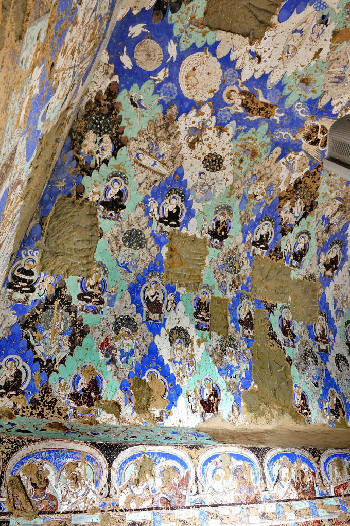 |
|
Frescoes in Cave 38 depict performances of Kucha musicians. |
In addition, various color areas were often used in an alternate pattern. This style is prominent especially in ceiling paintings. The topmost of these arched caves are decorated with dozens of rhombic patterns, each with its own background color that decides its place on the walls.
In the main cell of Cave 38, 14 pairs of performing musicians are painted on the upper parts of two side walls, in each of which one has light skin and the other dark skin. The former have green aureoles above their heads, while those of the latter are white. Ancient painters paid great attention to contrasts in color tones and the brightness of each two adjacent colored areas. In terms of artistic methods, the Kizil Caves are the predecessors to the Mogao Grottoes and many other murals in temples in central China.